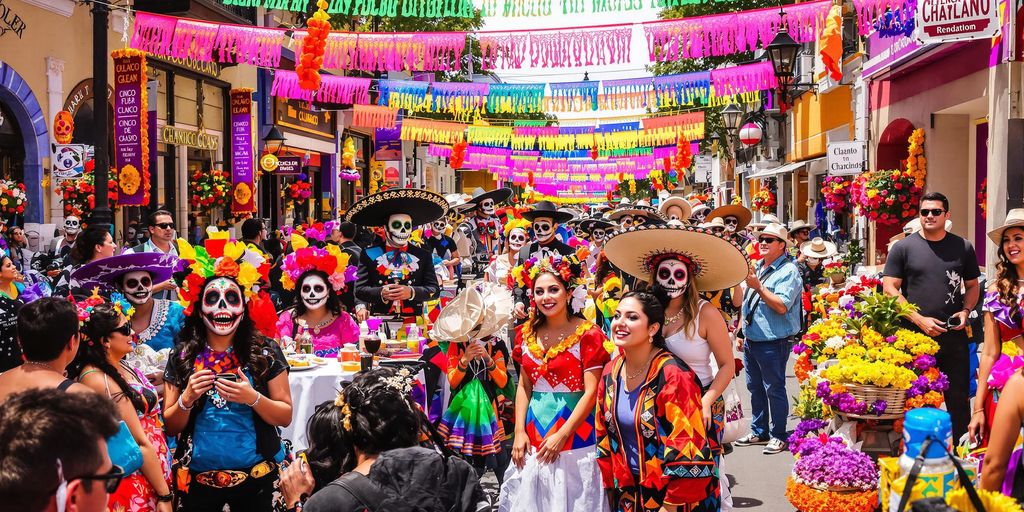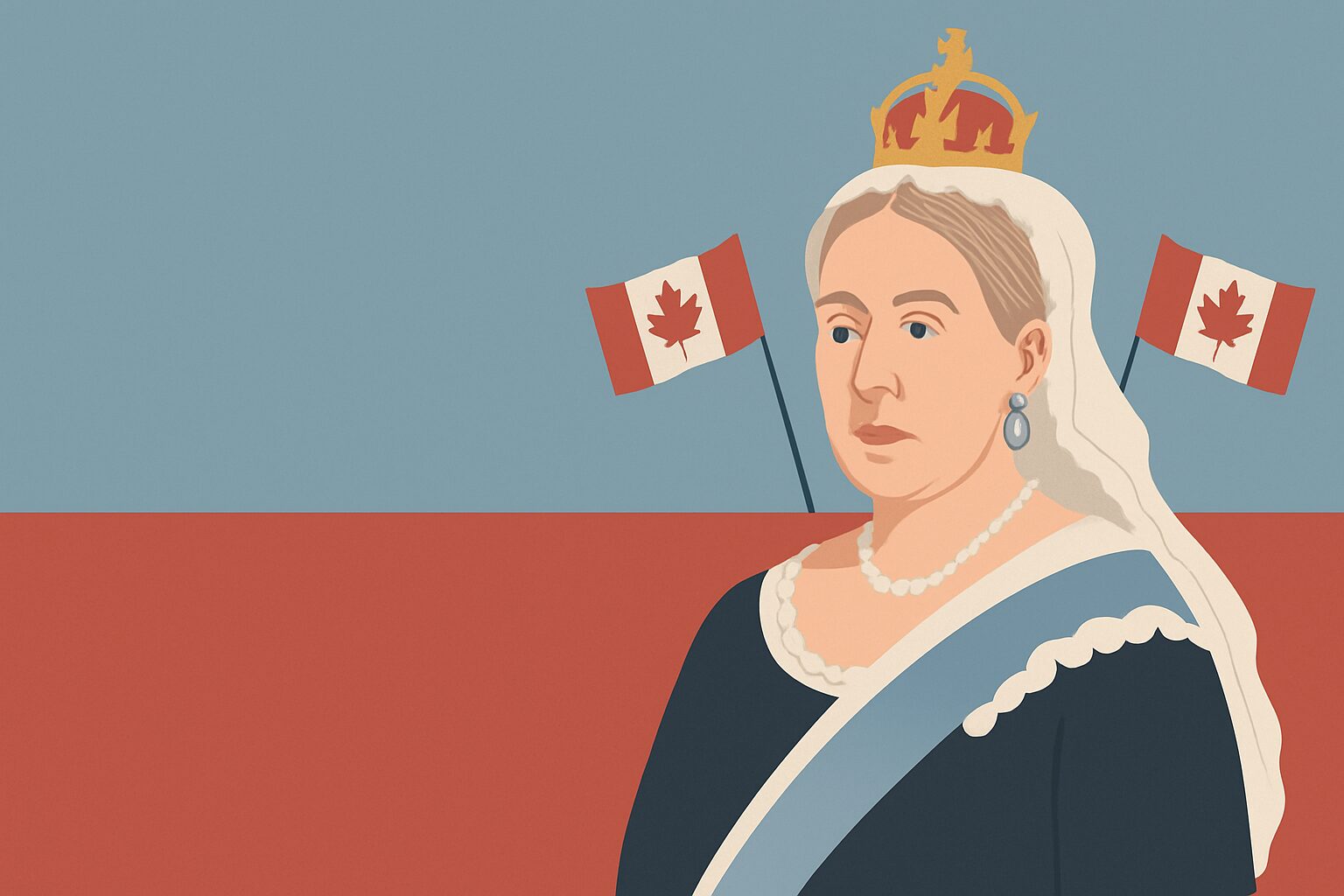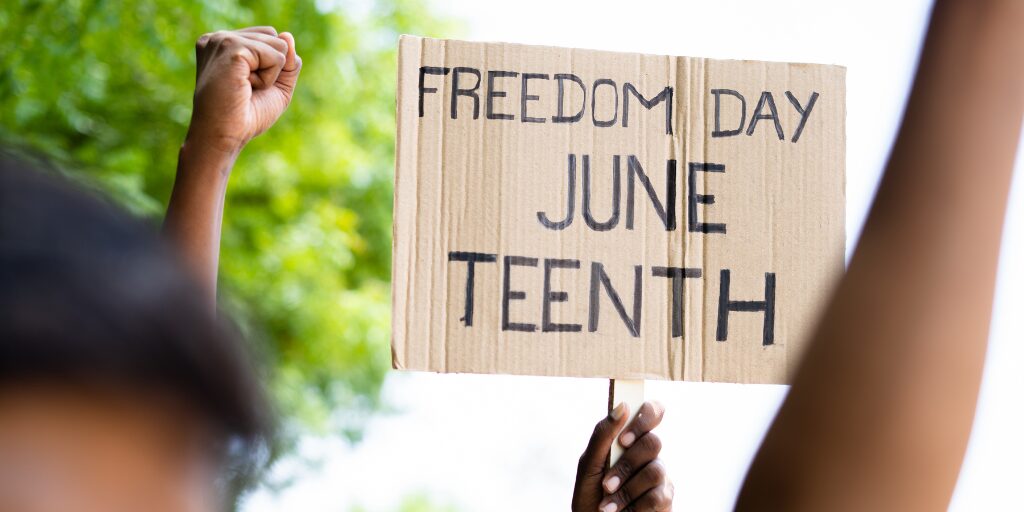Cinco de Mayo and Day of the Dead are two important celebrations in Mexican culture, but they often get mixed up by those unfamiliar with their meanings. While both are festive and colorful, they serve very different purposes and hold unique traditions. This article will break down the differences between Cinco de Mayo and Day of the Dead, helping you appreciate each celebration’s significance and customs.
Key Takeaways
- Cinco de Mayo celebrates a military victory, while Day of the Dead honors deceased loved ones.
- Cinco de Mayo is marked by parades and music, whereas Day of the Dead involves altars and family gatherings.
- Food plays a central role in both celebrations, with unique dishes for each holiday.
- Understanding the cultural context is key to celebrating these holidays respectfully.
- Avoiding cultural appropriation is important when engaging with these traditions.
Comparing Cinco de Mayo and Day of the Dead
While both Cinco de Mayo and Day of the Dead are Mexican in origin and carry cultural weight, they’re really different in how they’re observed and what they mean. One is about a military win, and the other is a spiritual tradition focused on family. It’s easy to mix them up if you’re not familiar with the details.
The Unique Traditions of Each Holiday
What really makes these holidays stand out are their unique traditions. Day of the Dead is both serious and celebratory, mixing solemn ceremonies with lively street parties. Think about it: visiting graves, sharing stories, and even having picnics in the cemetery. It’s about remembering and celebrating life, accepting death as part of the deal. Cinco de Mayo, on the other hand, is more about showing unity and national pride, with parades and music.
The Cuisine of Cinco de Mayo and Day of the Dead
Food is a big deal for both holidays, but the types of food and their meaning are different. For Cinco de Mayo, you might see a lot of tacos, mole, and other dishes that represent Mexican cuisine. Day of the Dead has its own special foods, like pan de muerto (bread of the dead) and sugar skulls, which are made to honor the deceased. The traditional dishes play a big role in the celebrations.
The Historical Context of Each Celebration
Cinco de Mayo marks the Mexican army’s victory over France at the Battle of Puebla in 1862. It’s a symbol of resistance and pride. Day of the Dead, however, has much deeper roots, going back to pre-Hispanic cultures. It’s a blend of indigenous beliefs and Catholic traditions, focused on honoring ancestors and maintaining a connection with those who have passed away.
What is Cinco de Mayo?
Historical Significance of the Day
Cinco de Mayo, often misunderstood, isn’t Mexican Independence Day. It actually commemorates the Battle of Puebla on May 5, 1862. This is when the Mexican army, against all odds, defeated the French forces. It was a huge morale boost, even though the French eventually won that war. The victory at Puebla became a symbol of Mexican resistance against foreign intervention. It’s a day to remember Mexican strength and unity.
Common Celebrations and Activities
While not a major holiday throughout Mexico, Cinco de Mayo is a big deal in the state of Puebla, where the battle took place. It’s also widely celebrated in the United States, especially in communities with large Mexican-American populations. Celebrations often include:
- Parades with colorful floats and traditional costumes.
- Festivals with music, dancing, and food stalls.
- Reenactments of the Battle of Puebla.
- Enjoying traditional Mexican cuisine like mole poblano.
- Educational events that highlight Mexican culture and history.
Cultural Misconceptions
One of the biggest misconceptions is that Cinco de Mayo is Mexican Independence Day. It’s not! That’s celebrated on September 16th. Another misconception is that Cinco de Mayo is a huge deal all over Mexico. It’s more widely celebrated in the U.S. than in many parts of Mexico. It’s important to remember that Cinco de Mayo is about celebrating Mexican heritage and the spirit of resistance, especially within the Mexican-American community. It’s a day to be proud of Mexican culture and history.
What is Day of the Dead?
Día de los Muertos, or Day of the Dead, is a vibrant and deeply meaningful holiday celebrated primarily in Mexico. It’s a time to remember and honor deceased loved ones, with festivities that blend indigenous traditions and Catholic beliefs. It’s definitely not just a Mexican version of Halloween!
The Essence of Day of the Dead
The core of Día de los Muertos is about remembering and celebrating the lives of those who have passed. Families create altars dedicated to the deceased, adorning them with marigolds, sugar skulls, favorite foods, and personal items. The idea is to welcome the spirits back for a visit, not to mourn their absence. It’s a joyful reunion, filled with stories, laughter, and cherished memories.
Observing Day of the Dead
Observing Día de los Muertos involves a range of activities, often spanning several days. These include:
- Visiting cemeteries: Families clean and decorate the graves of their loved ones, often bringing food, drinks, and music to share.
- Building altars (ofrendas): These altars are central to the celebration, filled with symbolic items that represent the deceased’s life and interests.
- Preparing special foods: Certain dishes, like pan de muerto (bread of the dead) and sugar skulls, are specifically made for the occasion.
Cultural Roots and Influences
The origins of Día de los Muertos can be traced back to ancient Aztec rituals honoring the dead. Over time, these traditions merged with Catholic beliefs brought by Spanish colonizers, resulting in the unique celebration we know today. The holiday reflects a deep respect for ancestors and a belief in the cyclical nature of life and death. The costumes worn during Día de los Muertos, often depicting calacas (skeletons), are a symbolic way to celebrate life and honor loved ones who have passed away.
Cultural Significance of Each Holiday
Cinco de Mayo as a Symbol of Unity
Cinco de Mayo, while often misunderstood outside of Mexico, really stands for something important: Mexican resilience. It’s not about Mexican Independence like some think, but rather a specific battle where the underdog won. This victory, against all odds, became a symbol of unity and pride for Mexicans. It’s a reminder that even when things look bleak, standing together can lead to triumph. Think of it as a historical ‘never give up’ message that continues to resonate.
Day of the Dead as a Celebration of Life
Day of the Dead, or Día de los Muertos, flips the script on how we usually think about death. Instead of mourning, it’s a party! Families create altars, decorate with bright colors, and share stories about loved ones who have passed. It’s about remembering and celebrating their lives, not dwelling on their absence. The idea is that the spirits come back to visit, so you want to make them feel welcome. It’s a beautiful way to keep their memories alive and show that love transcends even death. It’s a deeply personal and spiritual experience, focused on family traditions.
The Role of Family in Each Celebration
Family is at the heart of both Cinco de Mayo and Day of the Dead, but in different ways. For Cinco de Mayo, it’s about national family – a shared sense of identity and pride in Mexican heritage. Parades, festivals, and community events bring people together to celebrate their culture. On the other hand, Day of the Dead is intensely personal and familial. It’s about honoring specific ancestors and keeping their stories alive within the family. Building altars, cooking favorite foods, and sharing memories are all ways to strengthen those bonds and remember those who came before. Both holidays emphasize the importance of connection, whether it’s to your nation or your immediate family. It’s about cultural appreciation and respect.
The Unique Traditions of Each Holiday
Rituals and Ceremonies
Cinco de Mayo and Day of the Dead, while both Mexican in origin, have very different vibes. Cinco de Mayo is all about celebrating a military victory, while Day of the Dead focuses on honoring deceased loved ones. Think parades and reenactments for Cinco de Mayo versus altars and cemetery visits for Day of the Dead. It’s like comparing a lively street party to a heartfelt family reunion – both special, but in totally different ways.
Food and Drink Traditions
Food and drinks play a huge role in both celebrations, but again, the focus is different. For Cinco de Mayo, you’ll find lots of festive dishes like mole poblano, which is practically synonymous with the holiday. Day of the Dead has its own set of culinary traditions, like sugar skulls and pan de muerto, each with its own special meaning. Even the way the food is presented can be symbolic, like the Aztec sandwich with unmelted cheese, meant to represent the souls still learning to be happy.
Art and Decorations
When it comes to decorations, both holidays have their own distinct styles. Cinco de Mayo is full of vibrant colors, often incorporating the Mexican flag and symbols of national pride. Day of the Dead decorations, on the other hand, are more focused on honoring the deceased. Think marigolds, intricate paper cutouts (papel picado), and personalized altars adorned with photos and mementos of loved ones. The art and decorations really help set the tone for each holiday, highlighting their unique cultural significance.
Cuisine of Cinco de Mayo and Day of the Dead
Traditional Dishes for Cinco de Mayo
Cinco de Mayo is a great excuse to enjoy some seriously tasty Mexican food. Think tacos piled high with your favorite fillings, maybe some carne asada, or even a big batch of homemade guacamole with crispy tortilla chips. I usually end up making a huge platter of nachos – everyone loves those! It’s all about celebrating with flavorful, easy-to-share dishes. I’ve noticed that a lot of people also like to pair their meals with refreshing drinks like margaritas or Mexican beer. It’s a festive occasion, so the food is usually pretty casual and fun.
Foods Associated with Day of the Dead
Day of the Dead has some very specific food traditions. The most iconic is definitely pan de muerto, or bread of the dead. It’s a sweet bread, often decorated with bone-shaped dough and dusted with sugar. Families also prepare the favorite foods of their deceased loved ones to place on the altar. This could be anything from mole to tamales, or even just a simple plate of fruit. The idea is to welcome the spirits back with familiar and comforting tastes. It’s a really personal and meaningful aspect of the celebration.
The Role of Food in Celebrations
Food plays a central role in both Cinco de Mayo and Day of the Dead, but in different ways. On Cinco de Mayo, food is more about celebrating Mexican culture and enjoying a good time with friends and family. It’s a festive and lively atmosphere. On Day of the Dead, food is deeply connected to remembrance and honoring those who have passed away. It’s a way to connect with their spirits and share a meal with them, even if they’re no longer physically present. The act of preparing and sharing food becomes a loving tribute and a way to keep their memories alive. It’s a much more solemn and reflective experience.
Understanding Cultural Context
Before you even think about planning a celebration, take some time to learn about the history and meaning behind each holiday. Cinco de Mayo commemorates a specific battle, while Day of the Dead is a time to honor deceased loved ones. Knowing this basic difference is the first step. You can find a lot of information online, or even better, talk to someone who celebrates these holidays. Understanding the cultural context is key to celebrating responsibly.
Avoiding Cultural Appropriation
This is a big one. Cultural appropriation is when you take elements from another culture and use them in a way that’s disrespectful or trivializes their original meaning. Think about it: wearing sombreros and fake mustaches on Cinco de Mayo, or turning Day of the Dead into a costume party. These things can be hurtful to people who actually celebrate these holidays. Instead, focus on learning about the traditions and participating in a way that’s respectful. For example, instead of buying a cheap costume, consider purchasing decorations and costumes from Mexican artisans.
Engaging with Authenticity
So, how do you celebrate authentically? Here are a few ideas:
- Attend local events that focus on the history and traditions of the holidays.
- Learn a few words in Spanish and use them during the celebration.
- Cook traditional dishes and share them with friends and family. You can find traditional ingredients at your local grocery store.
- Support Mexican-owned businesses.
By taking these steps, you can show your appreciation for Mexican culture and celebrate in a way that’s meaningful and respectful. Remember, it’s about more than just having a good time; it’s about honoring a rich and vibrant culture. Understanding the significance of Cinco de Mayo and Day of the Dead can transform celebrations into acts of genuine cultural appreciation.
The Impact of Globalization
How Cinco de Mayo is Celebrated Worldwide
Globalization has really changed how Cinco de Mayo is celebrated. What started as a commemoration of a specific battle in Mexican history has morphed into something different across the globe. In the U.S., it’s often seen as a general celebration of Mexican culture, sometimes with a focus on food and drink. You’ll find parties and events that might not always reflect the holiday’s original meaning. In other parts of the world, the celebrations can be even more varied, often blending with local customs and traditions. It’s interesting to see how a single event can take on so many different forms depending on where you are. It’s not uncommon to see Mexican unity celebrated in different ways.
Day of the Dead in Popular Culture
Day of the Dead has also seen a surge in popularity outside of Mexico, largely thanks to its portrayal in movies, TV shows, and art. This exposure has brought awareness to the holiday’s unique traditions, like the ofrendas (altars) and the use of sugar skulls. However, it’s also led to some misunderstandings. Sometimes, the holiday is confused with Halloween, or its spiritual significance is overlooked in favor of its aesthetic appeal. Despite these challenges, the increased visibility has also created opportunities for cultural exchange and education. People are becoming more interested in learning about the holiday’s true meaning and participating in respectful ways. You can find traditional dishes being prepared for the celebrations.
Cultural Exchange and Misunderstanding
Globalization can be a double-edged sword when it comes to cultural celebrations. On one hand, it allows for greater cultural exchange and understanding. People from different backgrounds can learn about and appreciate each other’s traditions. On the other hand, it can also lead to cultural appropriation and misrepresentation. It’s important to approach these celebrations with respect and a willingness to learn. Taking the time to understand the history and significance of Cinco de Mayo and Day of the Dead can help ensure that celebrations are meaningful and respectful. For example, it’s important to know that Cinco de Mayo is not Mexican Independence Day. By engaging with these holidays in a thoughtful way, we can promote cross-cultural understanding and appreciation.
Common Misconceptions
Cinco de Mayo vs. Mexican Independence Day
It’s super common for people to mix up Cinco de Mayo with Mexican Independence Day, but they’re totally different. Cinco de Mayo celebrates the Mexican army’s victory over France at the Battle of Puebla in 1862. Mexican Independence Day, on the other hand, is celebrated on September 16th, marking the start of Mexico’s fight for independence from Spain in 1810. Think of it like this: Cinco de Mayo is like celebrating a specific battle win, while Independence Day is like celebrating the whole war being won.
Day of the Dead vs. Halloween
Okay, so both involve remembering the dead, but the vibe is completely different. Halloween, which has roots in pagan traditions, often focuses on spooky stuff and costumes. Day of the Dead, or Día de los Muertos, is a joyful celebration of life and remembrance. It’s about honoring loved ones who have passed away by creating altars with their favorite foods, drinks, and photos. It’s not supposed to be scary; it’s a time for family and remembering good times. Many people actually celebrate both, with Halloween on October 31st and Día de los Muertos on November 1st and 2nd. Halloween in Mexico is referred to as Día de las Brujas and is mainly regarded as a day for festivities for children.
The Overlap of Celebrations
Sometimes, people think these holidays are totally separate, but there can be some overlap, especially in communities with strong Mexican-American influence. You might see some Halloween-themed decorations mixed with Day of the Dead altars, or people might celebrate both in their own way. It really depends on the family and their traditions. The important thing is to be respectful and understand the cultural significance behind each celebration. For example, the Mexican people have also taken parts of Día de los Angeles and incorporated them into their Halloween celebrations which they refer to as Todos Santos.
Understanding the Celebrations
So, there you have it. Cinco de Mayo and Day of the Dead are two very different celebrations, each with its own vibe and purpose. Cinco de Mayo is all about celebrating a historic win and feeling that national pride, while Day of the Dead is a heartfelt time to remember and honor those we’ve lost. Knowing the difference helps us appreciate these traditions better. It’s not just about having fun; it’s about respecting the culture behind them. Whether you’re joining in the festivities or just learning, taking the time to understand these holidays makes the experience richer and more meaningful.
Frequently Asked Questions
What is the main difference between Cinco de Mayo and Day of the Dead?
Cinco de Mayo celebrates a military victory in Mexico, while Day of the Dead honors deceased loved ones.
When is Cinco de Mayo celebrated?
Cinco de Mayo is celebrated on May 5th each year.
What dates are associated with Day of the Dead?
Day of the Dead is celebrated from October 31 to November 2.
What kind of activities happen on Cinco de Mayo?
People celebrate Cinco de Mayo with parades, music, and dancing.
How do families celebrate Day of the Dead?
Families celebrate by creating altars, visiting graves, and sharing stories of their loved ones.
Is Cinco de Mayo the same as Mexican Independence Day?
No, Cinco de Mayo is not Mexican Independence Day; that is celebrated on September 16.
What foods are commonly eaten on Cinco de Mayo?
Traditional foods for Cinco de Mayo include tacos, guacamole, and margaritas.
What are some symbols of Day of the Dead?
Common symbols of Day of the Dead include sugar skulls, marigolds, and candles.




